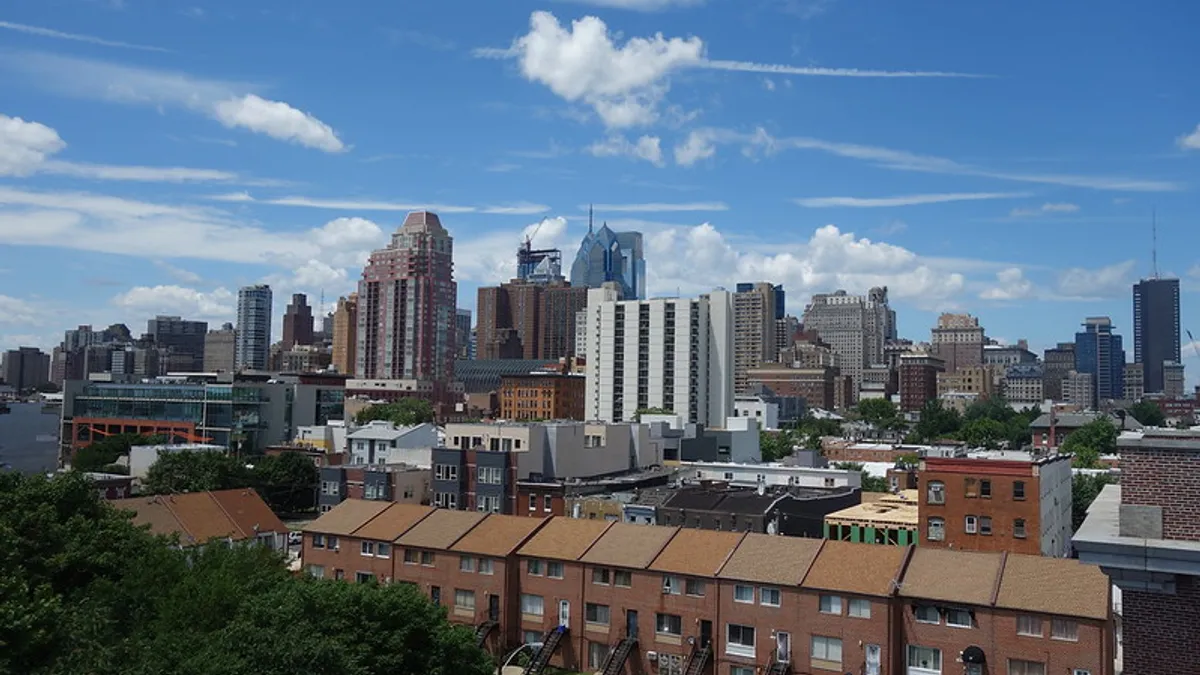Dive Brief:
- The City of Philadelphia has extended its request for proposals (RFP) for solutions providers to assist the city in understanding the number of households that are either without internet or are relying on unstable or low bandwidth options.
- The city's RFP, issued in partnership with the nonprofit Mayor's Fund of Philadelphia and the city's Office of Innovation and Technology (OIT), follows the August 2020 launch of PHLConnectED, a two-year program to provide free in-home internet and cellular devices to K-12 families in remote learning conditions.
- RFP respondents will be asked to identify the initiative's impact on reducing the number of K-12 households without a reliable internet connection, and identify the number of homes still in need of internet. The city will use this information in developing additional strategies to close the digital divide.
Dive Insight:
The COVID-19 pandemic has highlighted the digital divide that exists not only between urban and rural settings, but also within cities themselves. With governments issuing stay-at-home orders in a bid to stop the spread of the coronavirus, work, education and health were just some of the sectors to be impacted by forced remote settings.
To try and get the issue under control in Philadelphia, the city launched PHLConnectED, which offers eligible households up to two years of high-speed internet from Comcast's low-cost Internet Essentials program. It also looks to ensure students have the devices they need, and also offers digital skills training to students and families.
A 2019 survey by the School District of Philadelphia highlighted the connectivity challenges some in the city face. That survey found that 45% of students in grades 3-5 have access to the internet from a computer at home, while 56% of students in grades 6-8 and 58% of students in grades 9-12 have that same access available to them.
Prior to the launch of PHLConnectED, OIT estimated that 18,000 households were in need of connectivity assistance, based on limited data from surveys taken last year of families in the School District of Philadelphia and the U.S. Census Bureau's American Community Survey, from 2014-2018. City officials also analyzed addresses of families enrolled in the public school system to see which were not subscribed to one of the two available internet service providers (ISPs).
But even with access to this data, the city's RFP acknowledges it has a "limited understanding," as surveys of the local school district did not include every household, were limited in scope and were only conducted in the spring and early summer. The RFP also notes that the initial analysis did not include other sources of an internet connection, like mobile data or satellite.
Other cities have made similar efforts to close their digital divides as the pandemic continues, even as members of the Federal Communications Commission (FCC) have disagreed on the state of broadband internet availability. New York City announced in July it would accelerate its Internet Master Plan to provide high-speed internet access across all five boroughs, prioritizing public housing communities. And Seattle, which has seen support for a publicly owned municipal broadband utility, released analysis in September on where the gaps in its internet service are and how the city can close the digital divide.
Seattle's report found that certain neighborhoods are less likely than others to have internet access at home, and called on city leaders, community groups and ISPs to educate residents on available low-cost options; expand those options in targeted areas of the city, including by providing free Wi-Fi; partner with the private sector to provide refurbished devices and other initiatives; and advance legislation to advance universal internet adoption, among others.
"Demand for high-speed broadband has soared to new heights," Seattle's Chief Technology Officer Saad Bashir said in a statement at the time. "In today's digital world, access to affordable internet has become as essential as clean water and electricity."
Philadelphia has also looked to take steps towards closing its digital divide. The School District last March said it would spend $11 million to purchase up to 50,000 Chromebooks for students that lack a device at home, while OIT previously said its strategy to improve digital equity revolves around ensuring students have consistent internet access, "reimagining" centers that offer internet access to the public and creating more in-home access, and ensuring residents have access to more affordable and reliable options.
OIT said it is looking for "a highly accurate quantification" of household internet access. It says more accurate data will be crucial to help guide PHLConnectED strategy, "as well as for strategic planning to close the digital divide for all households in need of affordable, reliable, high-bandwidth internet connectivity," the RFP reads.












